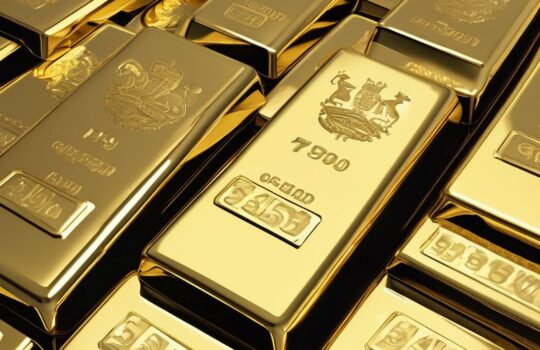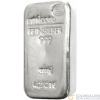What Determines the 1 oz Gold Bar Price? An In-depth Analysis

The price of a 1 oz gold bar is a complex interplay of various market forces and economic indicators. This article delves deeply into the factors that determine the pricing of these gold bars, offering a comprehensive understanding for investors and enthusiasts alike.
Key Takeaways
- The spot price of gold is a predominant factor influencing the cost of 1 oz gold bars.
- Global economic indicators, currency fluctuations, and central bank policies play significant roles in shaping gold prices.
- Supply and demand dynamics, mining costs, and investor behaviour are crucial in determining gold bar prices.
- Technological advancements in mining and trading are progressively impacting the gold market.
- Understanding market trends and geopolitical events is essential for predicting movements in gold prices.
Understanding the 1 oz Gold Bar Price

Influence of Global Market Trends
The price of a 1 oz gold bar is significantly influenced by global market trends, which include the spot price of gold, geopolitical stability, and international economic health. For instance, during times of economic uncertainty, gold prices tend to rise as investors look for safe-haven assets.
Impact of Currency Fluctuations
Currency strength, particularly the US Dollar, plays a crucial role in determining the price of gold bars. A weaker dollar typically makes gold cheaper for holders of other currencies, thus increasing demand and the price of gold.
Role of Economic Indicators
Economic indicators such as inflation rates, employment figures, and GDP growth directly impact gold prices. For example, higher inflation tends to increase the demand for gold as a hedge against the eroding value of fiat currencies.
For more detailed insights and up-to-date gold prices, visit our website at Gold Bullion Dealers.
Key Factors Affecting the 1 oz Gold Bar Price

Supply and Demand Dynamics
The price of 1 oz gold bars is significantly influenced by the basic economic principle of supply and demand. When demand increases or supply constricts, prices tend to rise. Conversely, an increase in supply or a drop in demand can lead to lower prices. Understanding these dynamics is crucial for anyone involved in buying or selling gold bars.
Mining and Production Costs
The costs associated with mining and producing gold also play a critical role in pricing. These costs can vary widely depending on the location and scale of the mining operations, as well as the technology used. Efficient mining operations in politically stable countries tend to have lower production costs, which can influence the final market price of gold bars.
Investor Behaviour
Investor sentiment and behaviour can also impact the price of gold. During times of economic uncertainty, gold is often seen as a safe haven, leading to increased demand and higher prices. Conversely, when the economy is strong, investors might divert their funds to more lucrative opportunities, reducing demand for gold.
For a detailed guide on factors affecting the price of 1 oz gold bars, visit Gold Bullion Dealers.
The Role of Central Banks in Gold Pricing

Reserve Management
Central banks hold a significant portion of the world’s gold reserves, using them to manage their currencies’ value. By strategically buying or selling gold, they can influence market prices and maintain economic stability. Bulk gold purchases by central banks can lead to higher prices by decreasing the global supply of the precious metal.
Monetary Policy Influence
The relationship between monetary policies by central banks and gold prices is indirect. When the Federal Reserve decreases interest rates, gold prices go up due to investor speculation. This doesn’t mean that central banks control gold prices, but instead that these institutions have an incidental effect on public demand for gold.
Market Intervention Strategies
Central banks can impact the spot price of gold through their market intervention strategies. Interest rate adjustments and gold buying/selling are two ways that central banks can influence the gold market. Investors need to keep an eye on the central bank’s actions and policies to make informed investment decisions in Gold ETFs. For more detailed insights, visit Gold Bullion Dealers.
Comparison of 1 oz Gold Bar with Other Gold Investments

Gold Coins vs. Gold Bars
When considering gold investments, the choice between gold bars and coins is pivotal. Gold bars generally attract lower premiums due to their simpler manufacturing process. However, coins can offer additional benefits such as collectability and legal tender status, which might justify their higher premiums. For detailed comparisons and to find the most cost-effective gold investment options, visit Gold Bullion Dealers.
Performance Over Time
Gold bars and coins have historically maintained their value, serving as a robust hedge against economic instability. The performance of gold investments tends to remain stable, even during periods of high inflation or economic uncertainty, making them a reliable component of a diversified investment portfolio.
Liquidity and Market Access
The liquidity of gold bars is generally high, especially for standard sizes like the 1 oz gold bar. Market access is straightforward, with numerous platforms and dealers available, including our own website. For investors, this means easier buying and selling processes, and the ability to align goals with market conditions for optimal investment decisions.
How Geopolitical Events Influence the 1 oz Gold Bar Price

Regional Conflicts and Stability
Geopolitical conditions directly impact the price of gold. Military conflicts, political tensions, and regional instability within global stress-points are factors that can influence the strength of the global economy. Gold prices tend to be negatively correlated with positive geopolitical ecosystems. In other words, gold often thrives during periods of instability and troubling geopolitical ecosystems.
Trade Agreements and Sanctions
Geopolitical factors may have a positive effect on gold pricing, which means that the value of gold will move in the same direction as geopolitical tension. Since gold is seen as a safe-haven asset, investors may turn to it during worrisome times in an attempt to protect their money from the fallout of conflict. Therefore, when geopolitical tensions flare, gold values may increase.
Economic Partnerships and Alliances
However, geopolitical factors may not be as influential of a factor on gold prices as many assume they are. Gold is typically associated with the U.S. economy, so overseas tensions and other events may not affect gold values as strongly as internal conflict or domestic monetary policy. When it comes to gold and geopolitical tensions, the old adage, “Buy the rumour, sell the news,” can apply. Investors tend to buy gold before a crisis occurs and then sell it to take profits once the situation unfolds.
Technological Advancements and Their Impact on Gold Pricing

Innovations in Mining Technology
The mining industry has seen significant technological advancements that have reduced costs and increased efficiency. Innovations such as automated machinery and improved extraction techniques not only enhance production but also reduce the environmental impact. These advancements directly influence the pricing of gold by lowering production costs, making gold more accessible at competitive prices on platforms like Gold Bullion Dealers.
Blockchain and Gold Trading
Blockchain technology has revolutionised the way gold is traded, providing transparency and security to transactions. The implementation of blockchain allows for the tracking of gold origin and transaction history, ensuring the authenticity and purity of gold bars. This has led to increased trust and, consequently, demand among investors, which can influence the price of 1 oz gold bars.
Future Trends in Gold Investment
The future of gold investment looks promising with ongoing technological innovations. Trends such as the integration of AI in market analysis and the potential for cryptocurrency-backed gold offerings could reshape the investment landscape. These developments could lead to new ways of trading and valuing gold, potentially impacting its price significantly. As the market evolves, staying informed through resources like Gold Bullion Dealers will be crucial for investors.
Understanding the Retail Market for 1 oz Gold Bars

Consumer Demand Trends
In the dynamic world of gold investment, understanding consumer demand trends is crucial. The preferences for 1 oz gold bars often reflect broader economic conditions and investor sentiment. At Gold Bullion Dealers, we’ve observed a marked increase in demand during times of economic uncertainty, as investors seek the safety of gold. Key factors such as design, aesthetics, and perceived value significantly influence purchasing decisions.
Marketing and Brand Influence
The power of marketing and brand influence cannot be underestimated in the retail gold market. Strong branding and effective marketing strategies can elevate a product’s status and desirability, directly impacting sales. At Gold Bullion Dealers, we focus on building a trusted brand that resonates with both new and seasoned investors, ensuring our 1 oz gold bars are a preferred choice.
Pricing Strategies and Premiums
Pricing strategies and the premiums charged on 1 oz gold bars are critical for retailers. These premiums vary depending on factors such as production costs, market demand, and dealer reputation. Our pricing at Gold Bullion Dealers is competitive, reflecting the true value of gold and ensuring transparency for our customers. We strive to offer the best value in the market, making gold investment accessible to a wider audience.
Conclusion
In conclusion, the price of a 1 oz gold bar is influenced by a myriad of factors, with the spot price of gold playing a pivotal role. This article has delved into the various elements that determine the cost of gold bars, from market demand and supply dynamics to the weight and purity of the gold itself. Understanding these factors can significantly aid investors in making informed decisions about purchasing gold bars, whether for investment purposes or as a hedge against economic uncertainty. As the gold market continues to evolve, staying informed and vigilant about these determinants will be crucial for anyone looking to invest in this precious metal.
Frequently Asked Questions
What determines the price of a 1 oz gold bar?
The price of a 1 oz gold bar is primarily determined by global market trends, currency fluctuations, economic indicators, supply and demand dynamics, production costs, and investor behaviour.
How much does a 1 oz gold bar cost?
The cost of a 1 oz gold bar fluctuates based on the spot price of gold, which is influenced by market conditions and investor demand.
Why should someone invest in a 1 oz gold bar?
Investing in a 1 oz gold bar can offer benefits such as value preservation, liquidity advantage, and a hedge against inflation.
How does the weight of a gold bar affect its price?
The weight of a gold bar, such as 1 oz, directly influences its price, as it determines the amount of precious metal contained within.
What is the difference between gold bars and gold coins?
Gold bars are typically purchased for investment due to their standard sizes and lower premiums over spot price, whereas gold coins can offer collectible value and legal tender status.
How do central banks influence the price of gold?
Central banks can affect gold prices through reserve management, monetary policy, and market intervention strategies.










